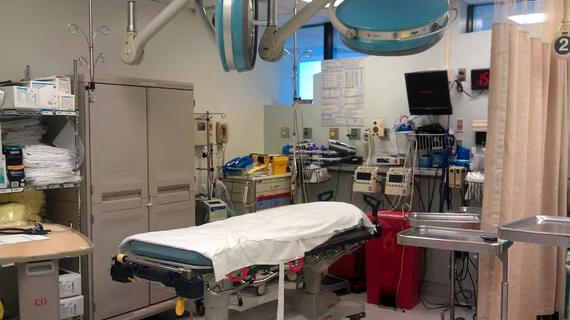Bedside ultrasound found to effectively guide clinical decisions in trauma patients
Although whole-body CT scans are frequently one of the first assessments in the triage of trauma patients, new research argues that the use of bedside ultrasound could be more appropriate for initial examinations.
According to the analysis, extended Focused Assessment With Sonography for Trauma (E-FAST) can appropriately guide clinical management while patients are in the trauma bay before they undergo whole-body CT. Experts involved in the study explained that the bedside protocol is especially beneficial in time sensitive situations when patients need immediate intervention.
“In time-critical circumstances, this workup may be the only information available to advise decision-making, because the CT scanner is not rapidly accessible or the clinical condition of the patient requires expedient admission to the operating room,” corresponding author Pierre Bouzat, MD, PhD, of Michallon Hospital in France and co-authors suggested.
In conjunction with clinical assessments, E-FAST is used to detect things like free abdominal fluid, pericardial effusion, hemothorax, pneumothorax, hemopneumothorax, selective intubation, lung contusion and pubic symphyseal widening. It also includes transcranial Doppler (TCD) measurements of cerebral artery flow, and chest and pelvic radiographs are frequently included in the assessment.
“A workup with clinical examination, radiographs, and E-FAST provides information to identify immediate therapeutic needs and develop a tentative plan,” the authors explained.
Although the protocol has been widely utilized since its inception, little research has explored its clinical utility in guiding the appropriate management of trauma patients.
To better understand this, the experts examined the cases of 510 patients from 6 trauma centers, each of whom had an initial workup involving E-FAST.
In 45.7% of cases, no therapeutic action was necessary prior to whole-body CT. However, the other cases included numerous interventions following E-FAST assessments prior to whole-body CT—6 emergency laparotomies, 2 pelvic angioembolizations, 52 pelvic binders, 41 chest drains, 16 chest decompressions, 60 osmotherapies, 6 thoracotomies and the initiation of norepinephrine in 108 cases.
In 493 out of 510 cases, interventions implemented based on clinical and E-FAST assessments alone were deemed the appropriate course of action. This, the authors suggested, confirms the safety and effectiveness of combining clinical assessment with E-FAST and targeted radiographs to identify conditions that pose immediate threats to trauma patients.
The detailed analysis can be found in JAMA.

